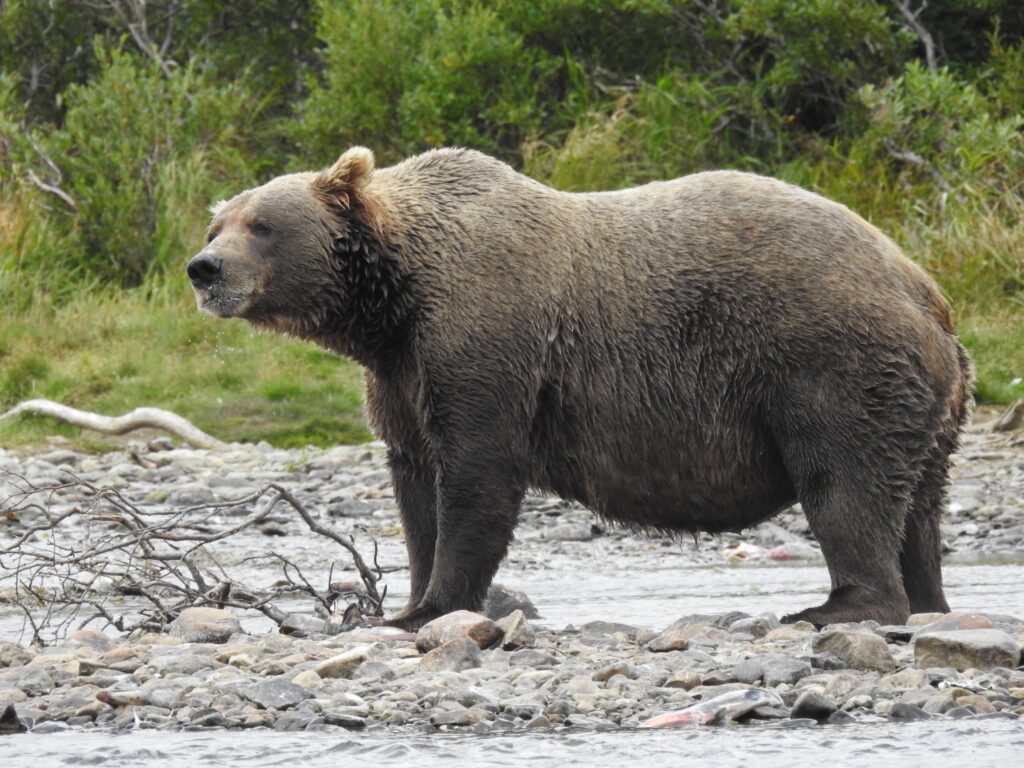The bear slips out of the willows a few yards away and eases into the creek. It glances our way, this cluster of strong-smelling objects huddled together along the gravel bank. The animal grabs a dead salmon off the creek bottom and strips the skin off with its teeth. The sound of flesh ripped from bone provides a chilling reminder of how easily this predator could tear us apart. We’ve come here to Katmai National Park to see the bears in their territory on their terms, but sitting still within in a few feet of this animal goes against all my survival instincts. Heart racing, I compel my body not to bolt as the bear inches closer, grabbing dead salmon from the bottom, ripping off the skin, crunching the heads, moving on. Our guide turns sideways to the bear, a gesture to show we are not a threat. It’s all about not showing aggression, acting with respect—no sudden moves or loud noises and no eye contact—giving the bears plenty of room, and letting them carry on with the full-time job of fattening up for winter.
The fact that we are allowed here in the domain of Katmai’s some 2500 bears is a result of a decades-long truce that has so far been working. Humans behave correctly. Bears regard humans as neither threat nor prey. This means humans must follow strict protocols. If a bear gets close, huddle together, crouch low to the ground, and look like a large object, not worth bothering when so many salmon are here for the picking. Humans must not become a source of food to the bears, so we follow the rules. Do not eat food while watching the bears. Eat your lunch in an area away from the bears, lean over your pack so crumbs don’t fall to the ground. Leave no clues that humans might mean something more delectable than dead and dying salmon.
In the main channel of the creek, the big bears stand guard over the best fishing spots, leaving the smaller bears to scavenge in the side channels. The Katmai bears have become habituated to humans, meaning the rules that apply here in Katmai do not generalize to bears in other places in Alaska. With so many salmon available, the bears grow larger than their interior Alaskan grizzly cousins who must work much harder to get enough to eat, burning precious calories pursuing caribou, ground squirrels, berries, and roots. Or, black bears, who compete with grizzlies, wolves, other black bears and humans for food. What if we treated other bears with the same kind of respect with which we treat Katmai bears? Would there be fewer bear attacks on humans, fewer bad bears? What if we stopped shooting them out of planes or baiting them with donuts and marshmallows just so a few hunters could kill them easily for a hide or head to hang on a wall. Or so they can more conveniently kill moose or caribou to cut up and fill their freezer. Shouldn’t we treat other animals with the respect we show the Katmai bears? Shouldn’t we treat each other the same way?

